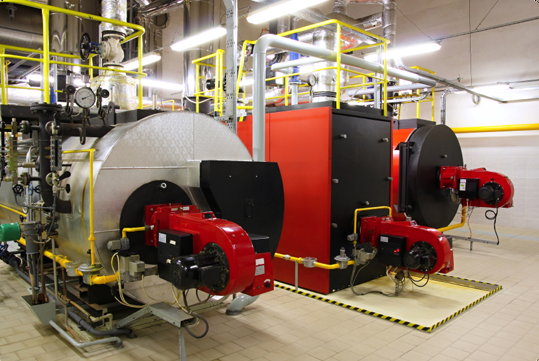The previous post explained how the properties of saturated steam make it an ideal agent for sterilization.
Two most common conditions NOT good for sterilization are:
- Wet steam
- Superheated steam
In this post we'll learn how they're caused and a few basic measures taken to prevent it.
Wet steam – Not Enough Energy
Wet steam is steam at saturation temperature containing more than 5% water. Wet steam lowers the heat transfer efficiency of steam, which will result in an inefficient sterilization procedure. Wet steam causes several major problems:
- Firstly during sterilization, the wetness in the steam clogs the pores of packed loads and prevents the steam from properly penetrating wrapped loads or sealed pouches. The wetness prevents the steam from penetrating the load.
- The second problem associated with wet loads occurs at the end of the sterilization process. The instruments or products absorb too much humidity resulting in wet loads at process termination. This is a big problem, because the dampness is a great habitat for bacteria to thrive.
- Lastly it is possible that the wetness will cause corrosion or spotting on the instrument being sterilized.
A Long Journey Home
Let’s follow the journey steam takes from the boiler until it reaches its destination, the chamber and the contaminated load. In hospitals steam has many uses ranging from heating water, central heating, laundry, hospital kitchen and sterilization. On average, less than 5% of hospital steam is used for sterilization. Steam is generated by a large central boiler and then transferred to distribution points via a piping system.

Hospital Boiler Room for Steam Production
Wet steam can already develop in the boiler. Usually some water is carried out of the boiler with the steam, that's fine, because as we mentioned, 3%-5% of condensate is acceptable. As steam travels, there are many places and reasons why steam cools down and condenses. When steam comes into contact with piping connections it can condense, also poorly isolated piping will cause steam to condense. Some condensate is natural and is taken care of by steam traps which are placed throughout the piping system. The steam traps collect the condensate which is returned back to the boiler. In the steam transport system there should be a steam trap at pre-defined distances along the piping to discharge the condensate. It's very important that the boiler, steam traps and piping be routinely maintained so that the problem of wet steam caused by the distribution system can be avoided. If they get filled with water and dirt, they will not work effectively, or not at all.
A short summary of the risks of Wet Steam:
- Wet loads
- Corrosion
- Lower temperatures in the System
Superheated Steam - Too Hot to Condense
Another possible problem can occur when steam becomes too hot, compared to the steam table. This is called superheated steam. This can occur when the speed in the steam lines is too high or just after a pressure reducing valve when the steam is not in a balanced situation, yet. An autoclave fed with superheated steam will function like a dry heat sterilizer, in which the killing of micro-organisms is less efficient than the optimal saturated steam required for sterilization. The dry heat sterilization process takes much longer even at higher temperatures than steam sterilization. For dry heat sterilization at a temperature of 180°C and exposure time of 30 minutes is needed.
I hope this will help you to understand the nature of steam and the critical role it plays in the sterilization process. Generating the ideal conditions for saturated steam will positively impact the sterilization results. Wet steam or superheated steam are problematic. If the steam supply is within the specified pressure and temperature range and saturated, then the sterilizer is able to succeed in its mission.
After these series of posts, it is quite clear to understand why steam is the most common method of sterilization.
Steam’s main advantages are:
- Efficient process
- Easy to control and safeguard
- Good penetration of porous loads
- Faster than any other method
- No pollution of the load in any way
- Does not release pollution into the environment
- Reliable
